What Is HEUR.Malware.Misc.Packed.Generic?
HEUR.Malware.Misc.Packed.Generic is a heuristic detection label used by antivirus software to identify potentially malicious software that employs packing or obfuscation techniques to conceal its true nature.
In detail, “HEUR” signifies that the detection is heuristic, meaning it relies on behavioral analysis rather than known virus signatures. “Packed” indicates that the software is compressed or encrypted, often to evade detection. This generic classification can encompass various types of malware, including trojans, ransomware, and spyware. That is why, if you notice the HEUR.Malware.Misc.Packed.Generic detection on your computer, prompt action is required. Run an anti-malware scan to detect the culprit behind the detection and remove it safely.
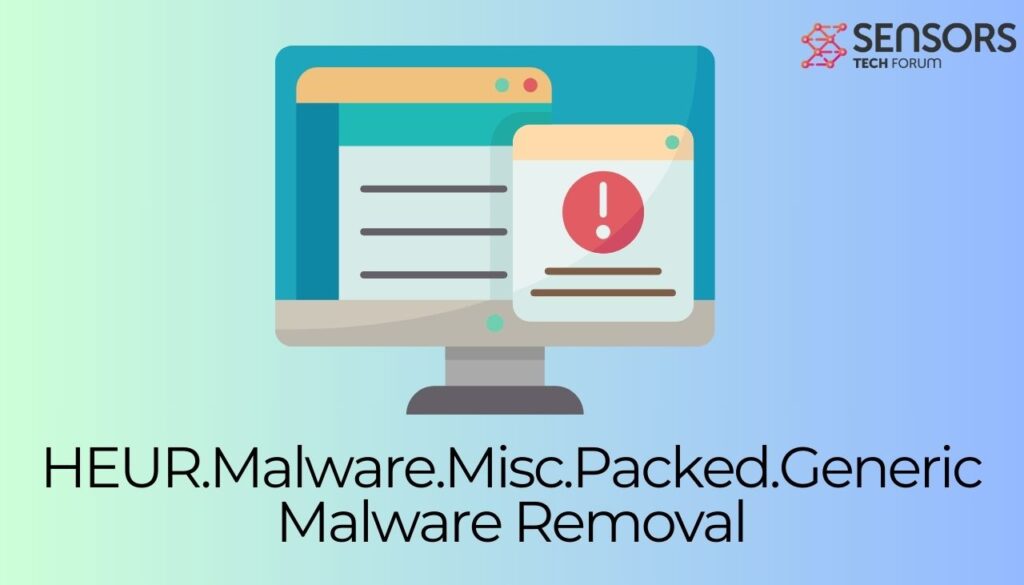
HEUR.Malware.Misc.Packed.Generic Summary
| Name | HEUR.Malware.Misc.Packed.Generic |
| Type | Trojan |
| Short Description | Aims to steal data from your computer and run different malware actions. |
| Distribution Method | Common infection methods including phishing messages and malware-infected files. |
| Removal Tool |
See If Your System Has Been Affected by malware
Download
Malware Removal Tool
|
HEUR.Malware.Misc.Packed.Generic – Infection Methods
According to our research, cybercriminals use the most popular tactics to distribute HEUR.Malware.Misc.Packed.Generic. These include social engineering and phishing tricks, e.g. the forgery of services and well-known companies by impersonating them. This forgery is done by creating template-based email messages and websites. Both of them may include stolen or fake content, as well as domain names that sound similar to the real ones.
In addition, the HEUR.Malware.Misc.Packed.Generic can be placed in what is called payload carriers, or virus files that will lead to the malware deployment once they are executed, for example from a malicious email attachment. Such can be documents across all popular office formats.
You should also know that trojanized files can be easily uploaded to file-sharing networks and popular download platforms. These are widely used by computer users to download files from the Internet. So, if you have downloaded a program from such a portal, this download may have been the intrusion gate of a trojan infection.
HEUR.Malware.Misc.Packed.Generic Malicious Capabilities
The trojan will run several dangerous actions, including:
- Persistence mechanisms, e.g. modifying system configurations or uses scheduled tasks to maintain persistence across reboots.
- Remote access to allow attackers to execute commands, steal sensitive data, and manipulate files on the infected machine.
- Data exfiltration capabilities to collect and transmit sensitive information such as credentials, system configurations, or usage patterns to a remote server controlled by the attacker.
- Command-and-Control (C2) communication which relies on encrypted or obfuscated protocols to communicate with its C2 server, making it harder to detect.
We recommend that every detected HEUR.Malware.Misc.Packed.Generic instance is removed as soon as possible to prevent further damage.
How to Remove HEUR.Malware.Misc.Packed.Generic Trojan
To fully and safely remove the HEUR.Malware.Misc.Packed.Generic trojan infection from your computer system, we recommend following the automatic removal guidelines below.
If you lack experience in malware removal, the best and most reliable method is to use a trustworthy anti-malware program. Such a program will not just immediately get rid of the trojan infection from your computer system, but will also ensure that your computer is protected from future infections.
Preparation before removing HEUR.Malware.Misc.Packed.Generic.
Before starting the actual removal process, we recommend that you do the following preparation steps.
- Make sure you have these instructions always open and in front of your eyes.
- Do a backup of all of your files, even if they could be damaged. You should back up your data with a cloud backup solution and insure your files against any type of loss, even from the most severe threats.
- Be patient as this could take a while.
- Scan for Malware
- Fix Registries
- Remove Virus Files
Step 1: Scan for HEUR.Malware.Misc.Packed.Generic with SpyHunter Anti-Malware Tool
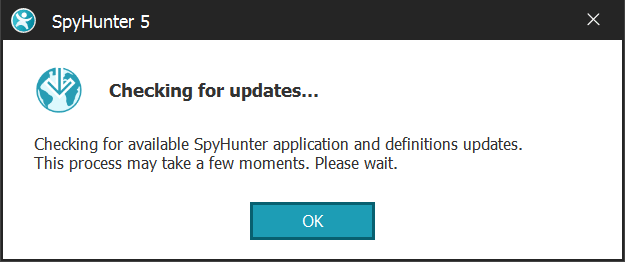

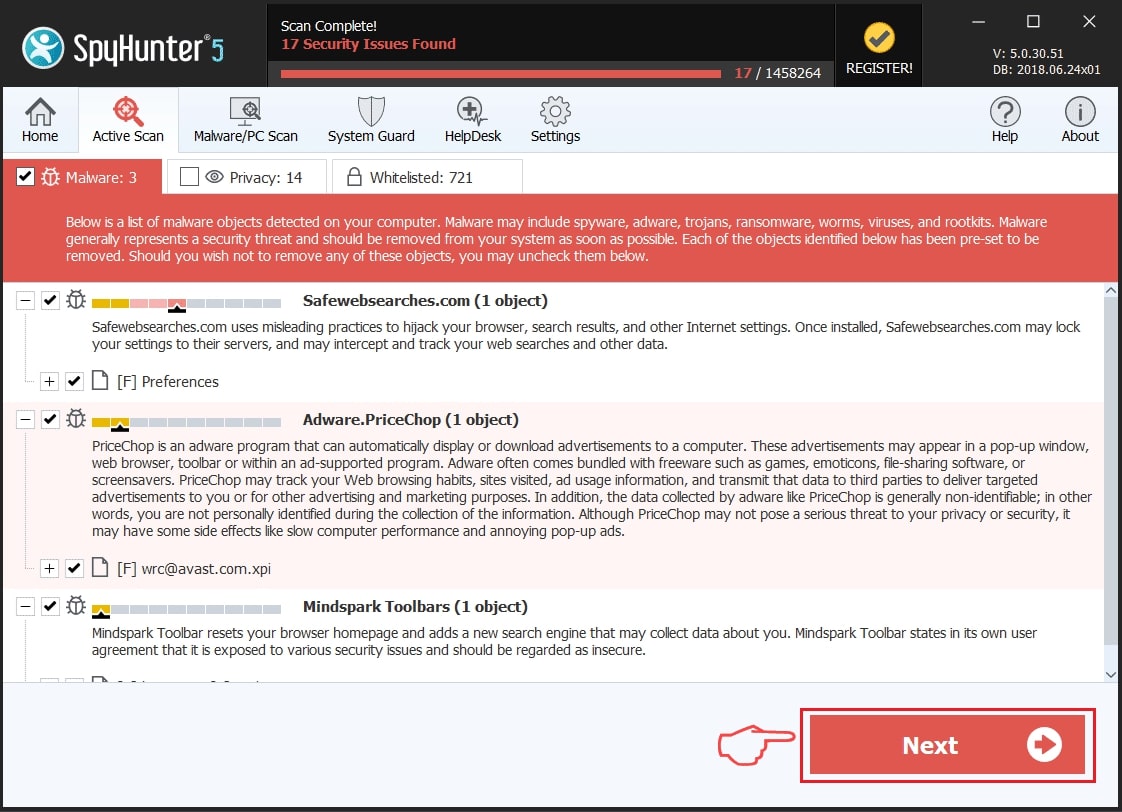
Step 2: Clean any registries, created by HEUR.Malware.Misc.Packed.Generic on your computer.
The usually targeted registries of Windows machines are the following:
- HKEY_LOCAL_MACHINE\Software\Microsoft\Windows\CurrentVersion\Run
- HKEY_CURRENT_USER\Software\Microsoft\Windows\CurrentVersion\Run
- HKEY_LOCAL_MACHINE\Software\Microsoft\Windows\CurrentVersion\RunOnce
- HKEY_CURRENT_USER\Software\Microsoft\Windows\CurrentVersion\RunOnce
You can access them by opening the Windows registry editor and deleting any values, created by HEUR.Malware.Misc.Packed.Generic there. This can happen by following the steps underneath:


 Tip: To find a virus-created value, you can right-click on it and click "Modify" to see which file it is set to run. If this is the virus file location, remove the value.
Tip: To find a virus-created value, you can right-click on it and click "Modify" to see which file it is set to run. If this is the virus file location, remove the value.Step 3: Find virus files created by HEUR.Malware.Misc.Packed.Generic on your PC.
1.For Windows 8, 8.1 and 10.
For Newer Windows Operating Systems
1: On your keyboard press + R and write explorer.exe in the Run text box and then click on the Ok button.
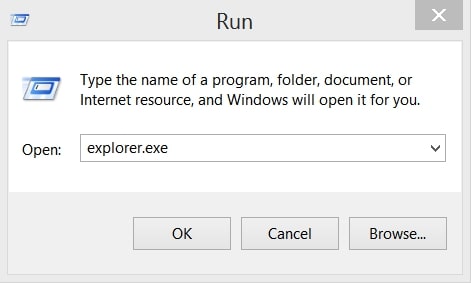
2: Click on your PC from the quick access bar. This is usually an icon with a monitor and its name is either “My Computer”, “My PC” or “This PC” or whatever you have named it.
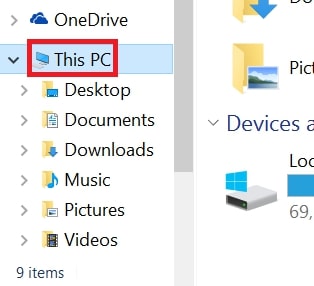
3: Navigate to the search box in the top-right of your PC's screen and type “fileextension:” and after which type the file extension. If you are looking for malicious executables, an example may be "fileextension:exe". After doing that, leave a space and type the file name you believe the malware has created. Here is how it may appear if your file has been found:
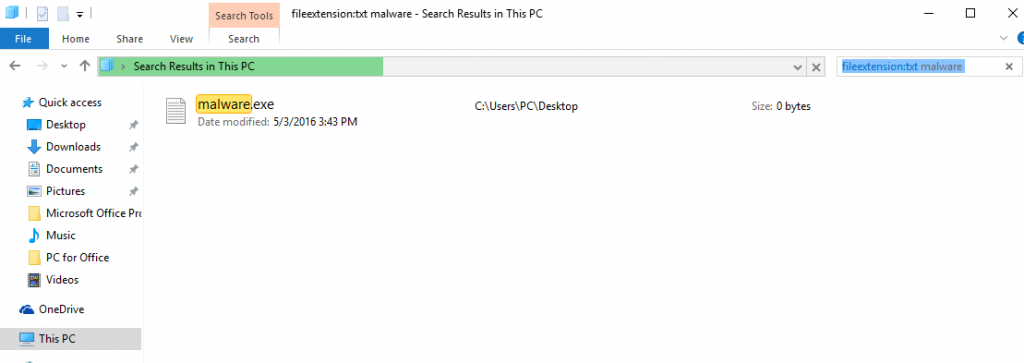
N.B. We recommend to wait for the green loading bar in the navigation box to fill up in case the PC is looking for the file and hasn't found it yet.
2.For Windows XP, Vista, and 7.
For Older Windows Operating Systems
In older Windows OS's the conventional approach should be the effective one:
1: Click on the Start Menu icon (usually on your bottom-left) and then choose the Search preference.
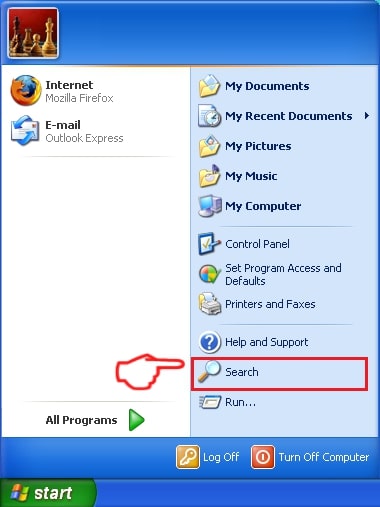
2: After the search window appears, choose More Advanced Options from the search assistant box. Another way is by clicking on All Files and Folders.
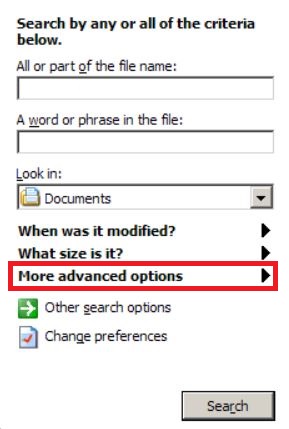
3: After that type the name of the file you are looking for and click on the Search button. This might take some time after which results will appear. If you have found the malicious file, you may copy or open its location by right-clicking on it.
Now you should be able to discover any file on Windows as long as it is on your hard drive and is not concealed via special software.
HEUR.Malware.Misc.Packed.Generic FAQ
What Does HEUR.Malware.Misc.Packed.Generic Trojan Do?
The HEUR.Malware.Misc.Packed.Generic Trojan is a malicious computer program designed to disrupt, damage, or gain unauthorized access to a computer system. It can be used to steal sensitive data, gain control over a system, or launch other malicious activities.
Can Trojans Steal Passwords?
Yes, Trojans, like HEUR.Malware.Misc.Packed.Generic, can steal passwords. These malicious programs are designed to gain access to a user's computer, spy on victims and steal sensitive information such as banking details and passwords.
Can HEUR.Malware.Misc.Packed.Generic Trojan Hide Itself?
Yes, it can. A Trojan can use various techniques to mask itself, including rootkits, encryption, and obfuscation, to hide from security scanners and evade detection.
Can a Trojan be Removed by Factory Reset?
Yes, a Trojan can be removed by factory resetting your device. This is because it will restore the device to its original state, eliminating any malicious software that may have been installed. Bear in mind that there are more sophisticated Trojans that leave backdoors and reinfect even after a factory reset.
Can HEUR.Malware.Misc.Packed.Generic Trojan Infect WiFi?
Yes, it is possible for a Trojan to infect WiFi networks. When a user connects to the infected network, the Trojan can spread to other connected devices and can access sensitive information on the network.
Can Trojans Be Deleted?
Yes, Trojans can be deleted. This is typically done by running a powerful anti-virus or anti-malware program that is designed to detect and remove malicious files. In some cases, manual deletion of the Trojan may also be necessary.
Can Trojans Steal Files?
Yes, Trojans can steal files if they are installed on a computer. This is done by allowing the malware author or user to gain access to the computer and then steal the files stored on it.
Which Anti-Malware Can Remove Trojans?
Anti-malware programs such as SpyHunter are capable of scanning for and removing Trojans from your computer. It is important to keep your anti-malware up to date and regularly scan your system for any malicious software.
Can Trojans Infect USB?
Yes, Trojans can infect USB devices. USB Trojans typically spread through malicious files downloaded from the internet or shared via email, allowing the hacker to gain access to a user's confidential data.
About the HEUR.Malware.Misc.Packed.Generic Research
The content we publish on SensorsTechForum.com, this HEUR.Malware.Misc.Packed.Generic how-to removal guide included, is the outcome of extensive research, hard work and our team’s devotion to help you remove the specific trojan problem.
How did we conduct the research on HEUR.Malware.Misc.Packed.Generic?
Please note that our research is based on an independent investigation. We are in contact with independent security researchers, thanks to which we receive daily updates on the latest malware definitions, including the various types of trojans (backdoor, downloader, infostealer, ransom, etc.)
Furthermore, the research behind the HEUR.Malware.Misc.Packed.Generic threat is backed with VirusTotal.
To better understand the threat posed by trojans, please refer to the following articles which provide knowledgeable details.


